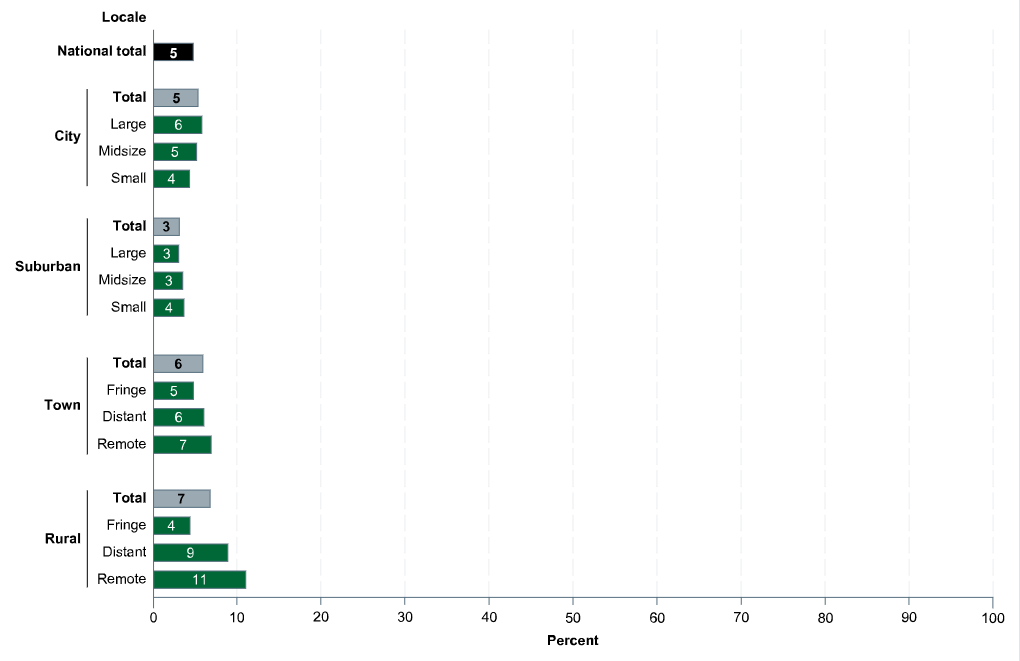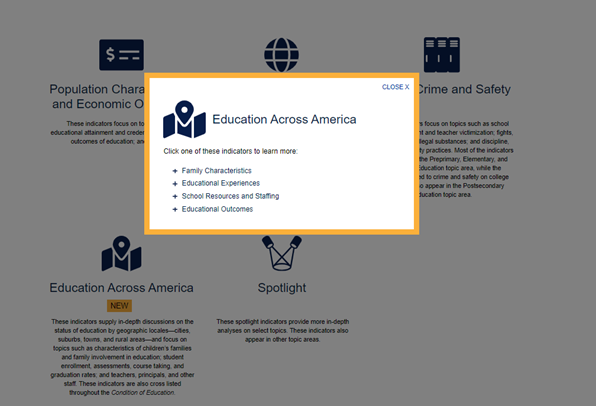NCES is excited to announce the release of five Education Across America indicators that focus on education in rural areas. These indicators—which summarize data patterns and provide analyses of the rural education experience—focus on the following topics:
For example, Rural Students’ Access to the Internet highlights the percentage of students in rural areas who had no internet access or only dial-up access to the Internet in 2019 (7 percent or 663,000 students). This percentage was higher than the percentages for students in towns (6 percent), cities (5 percent), and suburban areas (3 percent). In addition, compared with students in other locales, it was less common for students in rural areas to have fixed broadband internet access at home and more common for them to have only mobile broadband internet access at home.
Figure 1. Percentage of 5- to 17-year-old students with no access to the Internet or only dial-up access to the Internet at home, by home locale: 2019
[click to enlarge image]

NOTE: "No access to the Internet or only dial-up access to the Internet" includes households where no member accesses the Internet at home as well as households where members access the Internet only with a dial-up service. Data are based on sample surveys of the entire population residing within the United States. This figure includes only students living in households, because respondents living in group quarters (e.g., shelters, healthcare facilities, or correctional facilities) were not asked about internet access. Excludes children under age 15 who are not related to the householder by birth, marriage, or adoption (e.g., foster children) because their family and individual income is not known and a poverty status cannot be determined for them. Although rounded numbers are displayed, figures are based on unrounded data.
SOURCE: U.S. Department of Commerce, Census Bureau, American Community Survey (ACS), 2019, Restricted-Use Data File. See Digest of Education Statistics 2020, table 218.70.
These indicators are currently available through the Condition of Education Indicator System. To access them, select Explore by Indicator Topics and then select the Education Across America icon.

Stay tuned for the release of additional indicators in early 2023. Then, in spring/summer 2023, check back to explore our highlights reports—which will explore key findings across multiple indicators grouped together by a theme—and our spotlight on distant and remote rural areas and the unique challenges they face.
Explore the Education Across America resource hub—including locale definitions, locale-focused resources, and reference tables with locale-based data—and watch this video to learn more about the hub. Be sure to follow NCES on Twitter, Facebook, LinkedIn, and YouTube and subscribe to the NCES News Flash to stay up-to-date on Education Across America releases and resources.
By Xiaolei Wang and Jodi Vallaster, NCES